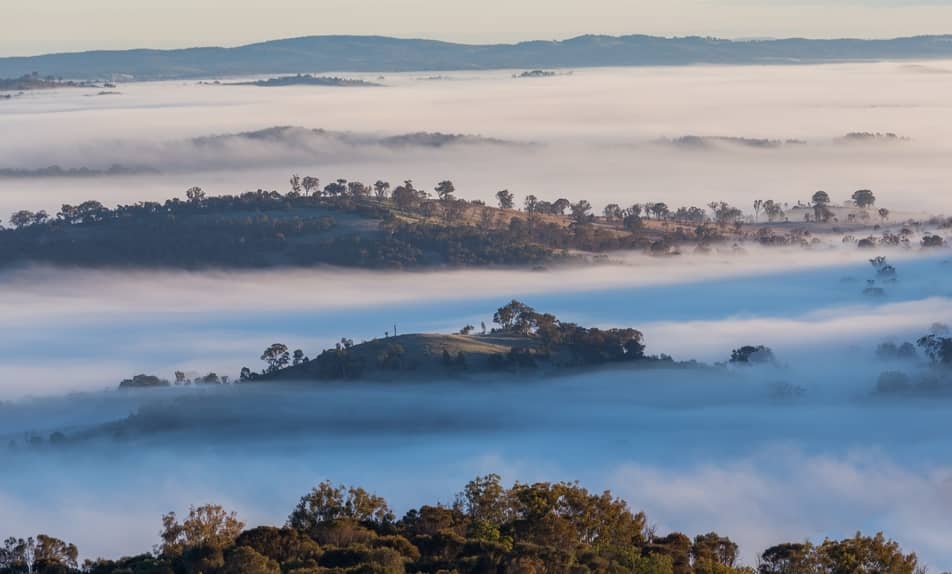The Natural Sources of Volatile Organic Compounds (VOCs)

Volatile organic compounds, or VOCs, are chemicals that have a strong tendency to vaporize from liquids or solids into gaseous states. While many people are familiar with the anthropogenic forms of these often-unhealthy chemicals, they aren't only created by humans.
What are the main sources of nitrogen oxides (NOx) and volatile organic compounds? It all depends on the specific substance in question:
Nitrogen Compounds
NOx are chemical compounds composed entirely of some combination of nitrogen and oxygen. Government bodies, such as the Environmental Protection Agency, or EPA, regulate some of these substances, but the laws can't account for all of their diverse natural origins:
-
Nitrogen dioxide occurs naturally in the atmosphere as a result of events like lightning strikes, volcanic release and metabolic respiration by bacteria.
-
Nitric oxide is produced in the bodies of humans and other animals, where it fulfills crucial roles by letting cells communicate with each other, fight inflammation and modulate blood pressure.
-
Nitrous oxide, or NO, which many people know as laughing gas, is produced by bacteria and fungi in soil and oceans. It also arises as a result of chemical reactions in the atmosphere. Although NO isn't a VOC, it has a big impact on air quality: Natural processes release millions of tonnes of the gas into the atmosphere. Emission rates can vary according to factors like temperature, the amount of locally available mineral nitrogen, soil acidity and soil water content.
Carbon Compounds
Many biogenic processes also release carbon-containing molecules. For instance, when people, animals and other aerobic organisms breathe, they exhale carbon dioxide, or CO2, which is essential for algae, cyanobacteria and plants that survive using photosynthesis. This compound can also escape during the combustion of materials like wood, peat and coal during forest fires. Carbon monoxide, or CO, also comes from natural blazes, but its principal sources are related to industrial processes.
Like NO, CO and CO2 aren't VOCs. They can, however, react with existing VOCs to create ozone pollution. Other substances, such as methane, a hydrocarbon known for its negative greenhouse impacts, come from the fermentation of materials like manure. Icy methane deposits on the seafloor may also release increased amounts of this gas in the future.
All told, carbon-bearing VOCs from natural sources account for an estimated 1150 teragrams of emissions annually. By comparison, humans release 142 teragrams of carbon-bearing VOCs yearly. This distinction isn't to say, however, that human actions are any less of a problem for the atmosphere: Urban areas and other inhabited zones routinely have higher VOC concentrations than their natural surroundings, which can significantly increase the risks of VOC exposure.
Some estimates suggest that more than half of greenhouse gas emissions occur as a direct result of meat and dairy agriculture. In other words, even though animals like cows naturally release the substance when they belch, the massive scale of industrial livestock activities has a severely negative impact on the environment even with EPA regulations.
Humans also have a significant effect on otherwise-normal VOC-causing processes, such as vegetation growth, soil activity and biomass burning. Also, remember that natural sources aren't the only problem: Synthetic materials inside homes and offices emit VOCs too, so installing a smart indoor air quality monitor may be a wise health move.
Other Compounds
Many VOCs are relatively benign, and humans have evolved to coexist with them. Vegetation is a major source of isoprene, a terpenoid VOC that gets emitted naturally during the routine life cycles of tree species like eucalyptus and oak. Each year, 600 million metric tons of isoprene enter the air. More than half of this comes from broadleaf trees, while small shrubs and bushes release a significant portion of the remainder.
Without many of these chemicals, the world would be very different. Limonene, a VOC that produces the characteristic citrusy odor of orange and lemon peels, makes up a large percentage of the essential oils from these plants. Styrene, which is used to produce polystyrene, occurs in everything from coffee beans to peanuts. Aromatic hydrocarbons like benzene, although now primarily produced for human use, originally came from natural precursor substances, such as tree bark resins.
Key Takeaways
It's important to understand that the human and environmental health consequences of VOC emission vary situationally. For instance, there's a big difference between ozone and particle pollution, so some activities involving these potentially hazardous substances may not be as risky as others. Although the EPA regulates many activities known to be dangerous, the outgassing of volatile organic compounds is a natural process that can impact air quality no matter where someone lives or works.
References:
https://www.sciencedirect.com/science/article/pii/S1352231099004653
ttps://en.wikipedia.org/wiki/Carbon_monoxide
https://en.wikipedia.org/wiki/Methane
https://en.wikipedia.org/wiki/Carbon_dioxide#In_Earth's_atmosphere
https://en.wikipedia.org/wiki/Limonene
https://www.epa.gov/indoor-air-quality-iaq/technical-overview-volatile-organic-compounds#2
